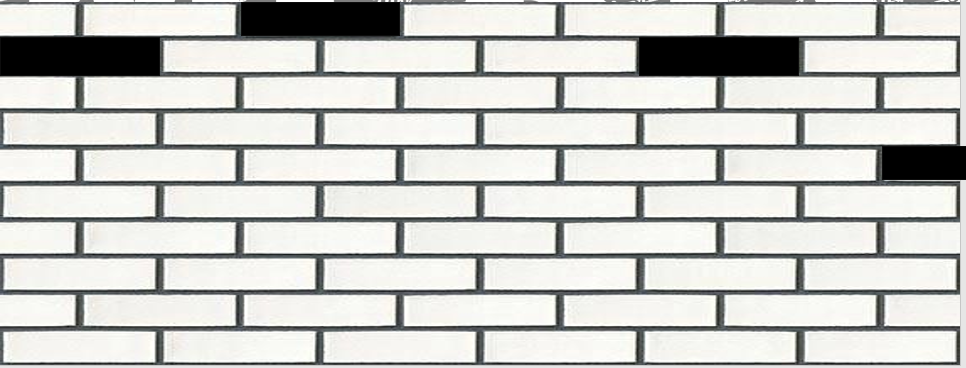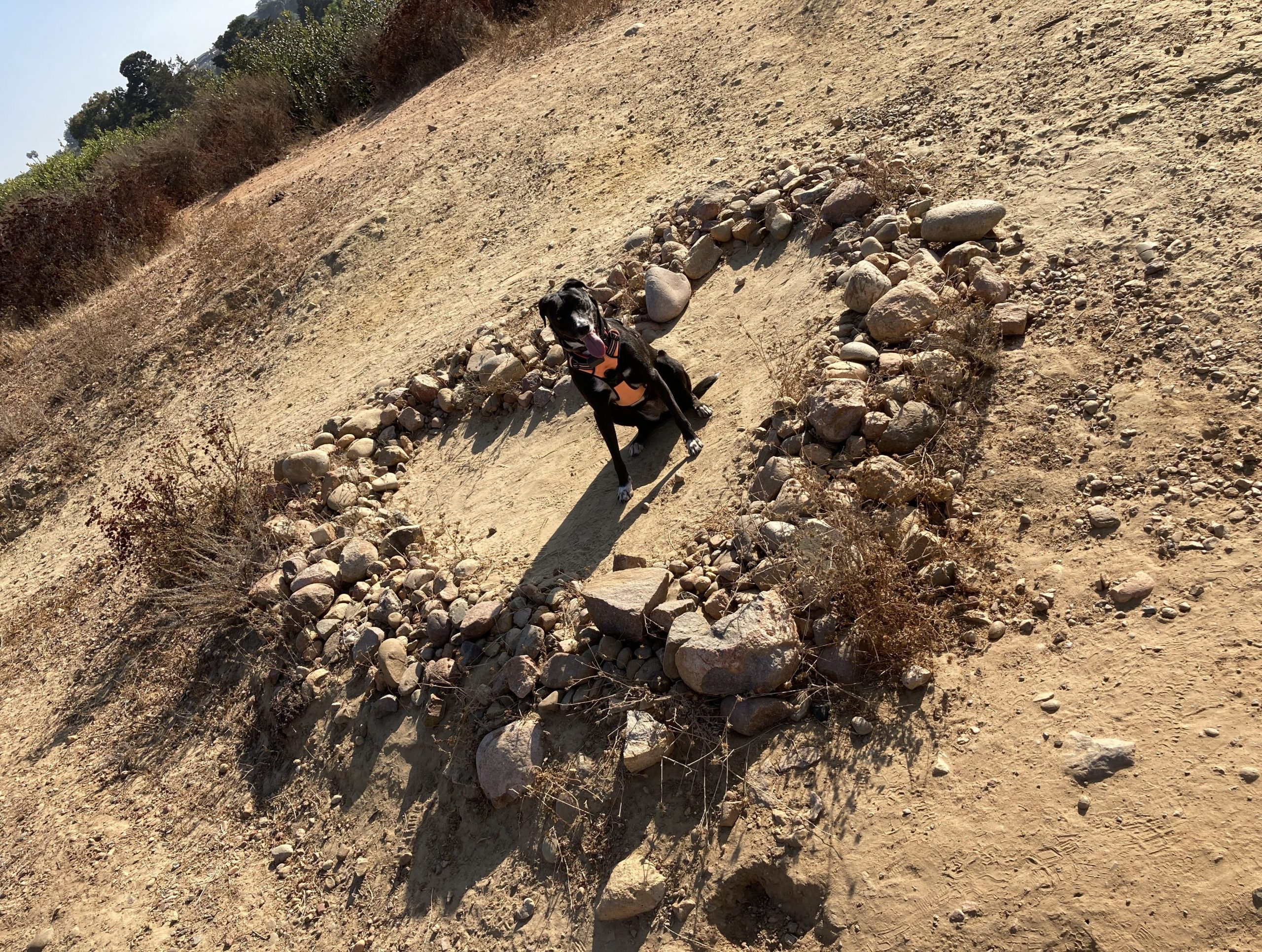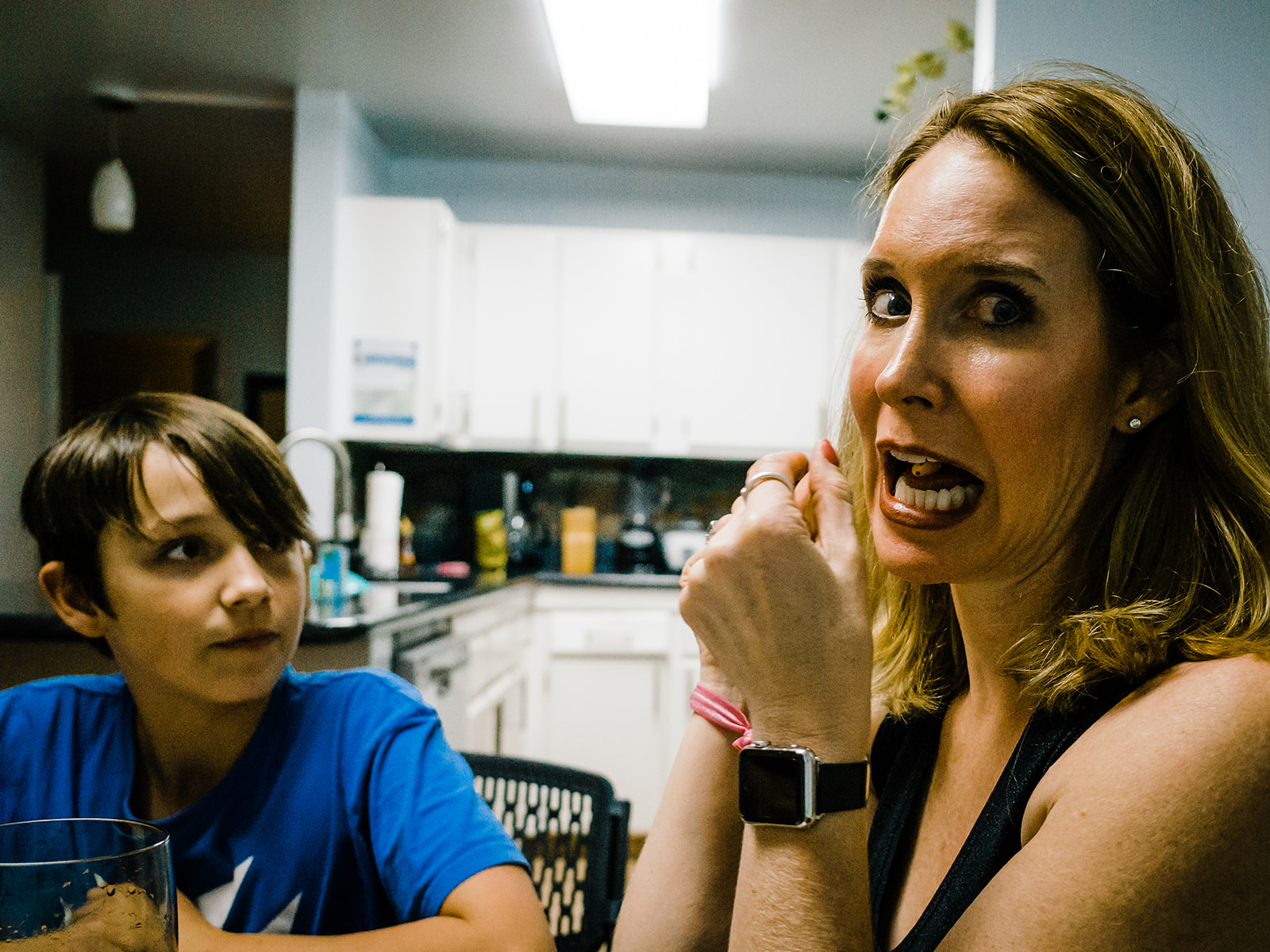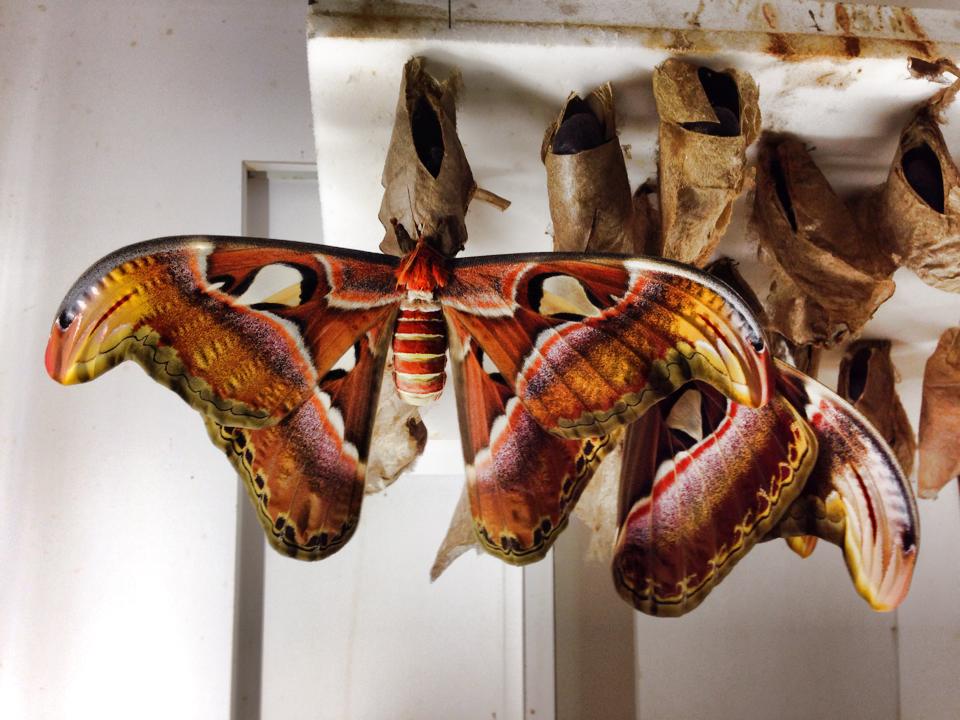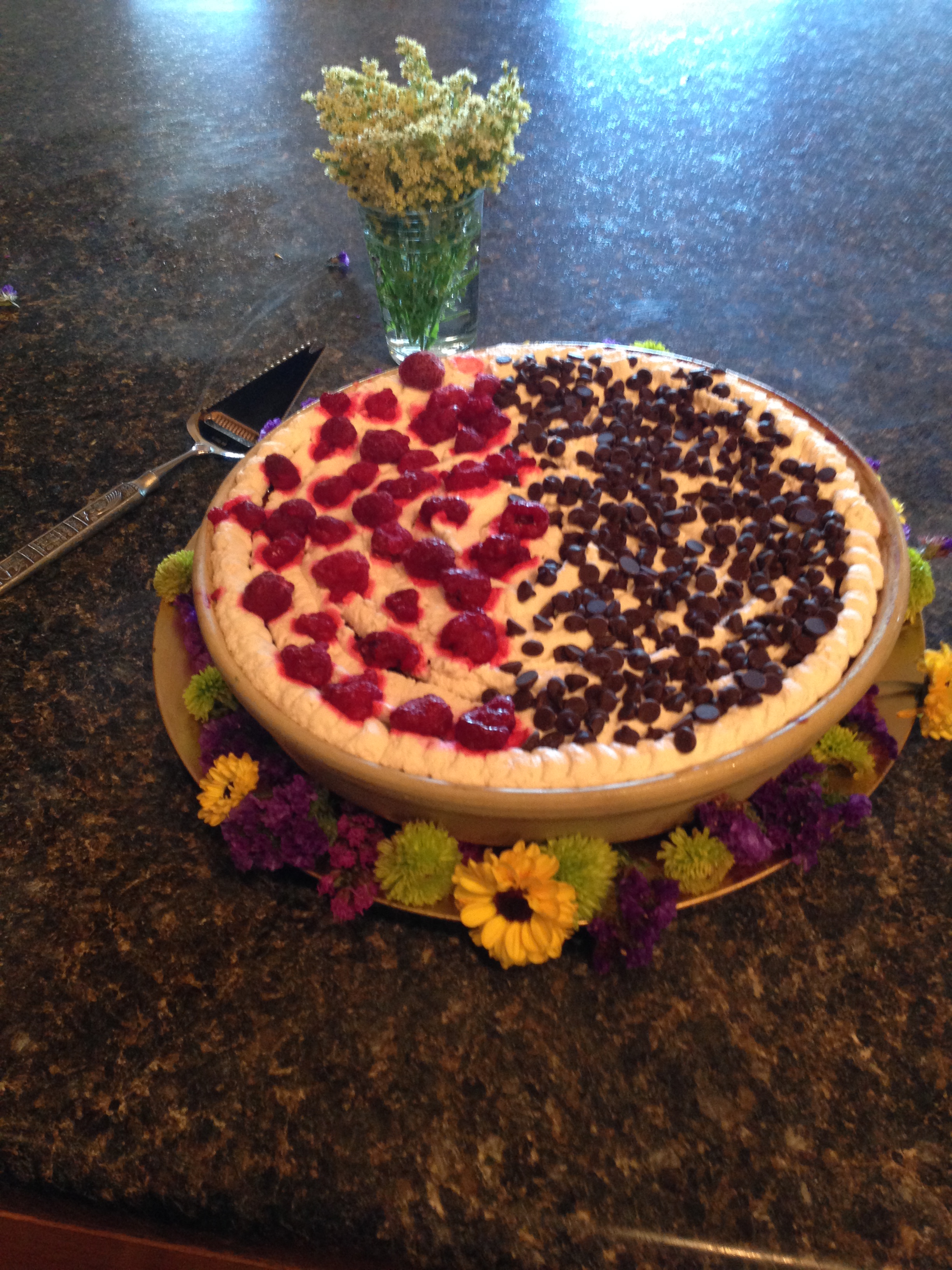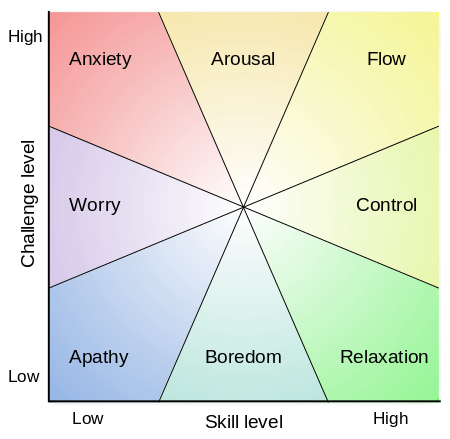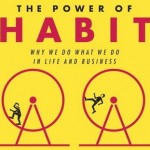The gratitude, shit, and ambivalence of "being distinguished"
Last November during the 2019 annual convention of The National Communication Association, I joined the five others who were named this year as one of their Distinguished Scholars. With the conference virtual in nature, and the scheduled time (which landed at 6 a.m. for me) I had originally approached the panel as more as a chore than a celebration. Nonetheless, like many academic “have-tos” the panel spurred some thinking.
 The award is meant to reward communication professors for a lifetime of scholarly achievement. As noted in an article that my school wrote about the award, “NCA’s Distinguished Scholar Award is the ultimate honor bestowed by our largest professional association. Only four or five of these awards are provided each year, so this means that recipients are in the top 1% of the top 1% of scholars in our discipline.”
The award is meant to reward communication professors for a lifetime of scholarly achievement. As noted in an article that my school wrote about the award, “NCA’s Distinguished Scholar Award is the ultimate honor bestowed by our largest professional association. Only four or five of these awards are provided each year, so this means that recipients are in the top 1% of the top 1% of scholars in our discipline.”
So, this is reason for celebration, yes? Sure, of course, I feel happy that my peers have appreciated and admired my scholarship.
But, truth be told, I’m also left with mixed feelings. One of those feelings is relief. Anyone who knows me knows that one of my traits is striving, reaching, and chasing. This is exhausting for me. And probably exhausting for others to put up with. During my sabbatical, I have been engaging in many self-care practices that are geared more toward being and stretching than chasing. Thank you Scott Sonenshein and Strozzi Institute for your help with this.

Another feeling that this award brings is ambivalence. As many readers may know, the award comes with baggage. In Spring 2019, the communication discipline came under sharp critique because of the whiteness of the distinguished scholars and our discipline at large. Along with a community of others, I spoke out about this issue via blog posts and an article contribution to Departures in Critical Qualitative Research that discussed the whiteness of “merit.” So, to receive the award, as a white woman, I am also perpetuating the whiteness of the group of Distinguished Scholars. To borrow Sarah Ahmed’s apt metaphor, I am another brick in the wall of exclusion and privilege (something I expand on in the afterword of this article).
The hypocrisy of receiving an award that perpetuates white privilege is a disillusioning and uncomfortable space to be in. But, I don’t want to deal with the discomfort by shielding my eyes or looking away. But instead, as Pema Chodron would suggest, I’m choosing to look at and be with the shit. And consistently look carefully at my own practices and scholarship in regard to how I can motivate transformation, social justice, and disruption of #CommunicationSoWhite.
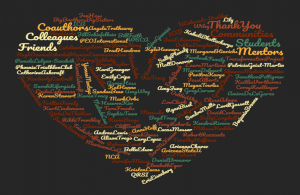
Third, this award comes with a huge feeling of gratitude. I couldn’t have done this alone. The scholarship I’ve accomplished over the years (which include a couple books and over 90 scholarly manuscripts) has been amassed in community with other people—including mentors, colleagues, coauthors, students, and communities of supporters. In preparing for my Distinguished Scholar talk, I spent several hours collecting and ruminating on the many people who have served as cheerleaders, constructive critics, thought partners, and hand holders. Tears ran down my face as I considered the overflow of memories. My thanks and appreciation is overflowing for these amazing human beings.
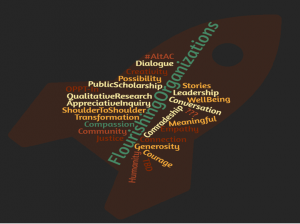
Finally, I’m not done yet. Although Distinguished Scholar is a “career” award, I’ve still got lots of juice to squeeze. Some of my future trajectories are captured in this graphic. The rocket ship makes me smile and feel energized for what’s next. I hope others will join on the ride.
The happiness boost of talking with strangers with pups in the park
One of the greatest and unexpected joys of late has been talking with strangers with pups in the park. Our San Diego sabbatical beach bungalow is right around the corner from Kate Sessions Park, and I visit it almost every morning with our rescue dog, Lily.
These interactions usually only last two or three talk turns and go something like this.
Me: “Oh my gosh, your dog is adorable. Is it a puppy? Oh, no? How old?”
Them: “What about yours?”
Me: “Oh, she’s about three.”
Them: “Is your pup nice? O.k. to say hi?”
Me: “Yes, she loves dogs but is just scared of most people. She’s feral.”
Them: “Feral? A dog can be feral?”
And, then, depending on the number of sniffs and snorts, I may go on to explain how we think our adopted pup was born on a reservation in Arizona, and that she wasn’t around human beings until after four months old, blah, blah, blah.
Of course, the words don’t matter all that much. It’s the short connection that makes the difference. Today, I met a guy with a 12-year-old lumbering black lab. His name was Olaf and his gait indicated that he clearly suffered a sore hip. The dog, not the guy. That said, Olaf still wanted to chase after Lily’s orange ball. The guy, scruffy and ball-capped,explained, “Olaf doesn’t realize that he can’t chase it anymore.”
With a chuckle, I said, “Sounds about right. That’s me in yoga! I refuse to realize that I can’t do handstands anymore!” And, by god, that’s the truth. Refusing to give up on popping upside down might be part of the reason I am midway through a set of “tune-up” chiropractic visits. But, I digress.
Anyway, we chatted for maybe another minute or two. Lily fetched and Olaf lumbered nearby to steal the ball after Lily dropped it at my feet. Among other things, ball-capped guy indicated with a tinge of real feeling, how he kept noticing how more and more people including himself couldn’t do the things they once had enjoyed so readily. I nodded in commiseration as I wiped Olaf’s slobber off the ball and tossed it again.
The content of the rest of the chit-chat wasn’t all that memorable. But I walked away with my spirit lifted, and aware of the humanity of this man. Ball-capped guy loved limping Olaf enough to still take him to the park. He noticed grief and loss in those around him. He wanted to share himself, and ask questions of me, even if briefly.
People tend to become chirpy, clever, and cheerful with strangers. And, the research says that people develop their feelings of well-being and identity largely by reflecting on their own behaviors.
This kind of connection, during a period of extreme social isolation, and especially in the heaviness of grieving COVID’s deadly strike upon my husband’s grandpa, is meaningful.
And, in fact, research tells us that talking to strangers is actually good for our wellbeing both in the short and long term. In the short-run, people become happier because we tend to be on our “best behavior” when talking with strangers. People tend to be at their worst (e.g., most grumpy, most boring, most jerky) around those they spend the most time with. It’s awful but true. I guess folks just assume (oftentimes erroneously, by the way) that those closest to them will stay the course.
People tend to become chirpy, clever, and cheerful with strangers. And, the research says that people develop their feelings of well-being and identity largely by reflecting on their own behaviors. It follows, then, that talking with strangers provides an avenue for people to instantly view themselves as, you guessed it, chirpy, clever, cheerful.
And, in the long-run, the research suggests that this type of conversation counts as an act of kindness. And sharing kindness has consistently been linked with subjective well-being and happiness.
I’ve known this research for years, and I’ve even assigned a “talking with strangers” assignment in the course I lead at ASU on communication and happiness. But it’s just recently that the happiness boost from talking to strangers has come into such sharp focus. And, it seems all that much more meaningful right now, six months into the pandemic and into what Brené Brown calls, being right smack dab in the middle of the dreaded “day two” phenomenon.
I’m not sure if I’ll see the Olaf or ball-cap guy ever again. And it doesn’t even matter. But I do look forward to my next accidental on purpose interaction with a stranger with a pup in the park. And I feel quite thankful for the dogs. Those furry critters are such a “good reason” for me to have a quickie conversation and then, carry on, with a bit more joy in my spirit and lightness in my step.
Curiosity, Conversation, and Happiness
The happiest people in the world are the most social. Many of us seek to scratch the itch of happiness that comes from sociality by an addiction to social media – our little pocket size dopamine hitters. However, the little dopamine hits we get from the buzzes and beeps of “likes” does not create the longer-term serotonin in our bodies that is created with embodied synchronous social interaction.
An issue that stands in the way people feeling motivated to just be and interact together is increasing communication anxiety. Even my honors communication students at ASU express nervousness about being in an elevator without their phone, or even calling and talking to a person to order restaurant take-out. When we spend hours online crafting perfectly curated lives and photoshopped selves, there is less time to practice the fine art of conversation.
So what to do? Perhaps one area to seek respite is that we need not worry so much about what we are going to SAY, but rather should be thinking about what we are going to ASK. Indeed, one of the habits of the most empathetic people is their unending curiosity about others. And, the anxiety melts away somewhat when we can consider a conversation as an opportunity to simply learn about others rather than as a dictate to look good or make a point.
The best question askers are vulnerable and willing to learn. Someone who is only trying to prove themselves right will have no problem asking questions. But, beware. People who think they know best cannot even ask the right questions. Asking questions requires close listening to what other people want to talk about, and then encouraging them to say more. Good conversation is not about winning or proving a point, not about discovering weakness in others, but instead about bringing out others’ strengths and understanding why they believe or act the way they do.
A good place to start in conversation, according to Hans-Georg Gadamer is to ensure that the other person is WITH us in the conversation. This could mean lots of things, but for me, it means that we must create relatability. And creating relatability is also about vulnerability. What might this look like?
At school, I oftentimes play a game with others in the elevator with me. Can I create relatability within 15 seconds? Sometimes this means commenting or asking the other about the weather, or the awful parking situation. Other times it means asking, “do you think those orange crumbles on the ground are Cheese-its or Doritos?” In today’s day and age, offering these snippets necessarily also offers the opportunity for me to be rejected or ignored. Perhaps they won’t hear me if they’re wearing headphones, or they will feel irritated that I have interrupted their screen scrolling. And, sometimes that’s the case. However, often, we share a moment of connection, a chuckle, or moment of camaraderie. And, the research shows that even short conversational connections with strangers provides an uplift in our mood.
Another thing to consider that may make conversation less stressful and more inviting is that we do not (and should not) master plan our interactions. We should not think of a conversation as something we conduct. Rather, it’s jazz improvisation. To become good at jazz, we need practice. However, to become a jazz virtuoso, we must also simply listen and let go of the reigns. Where we end up is not so important as the journey.
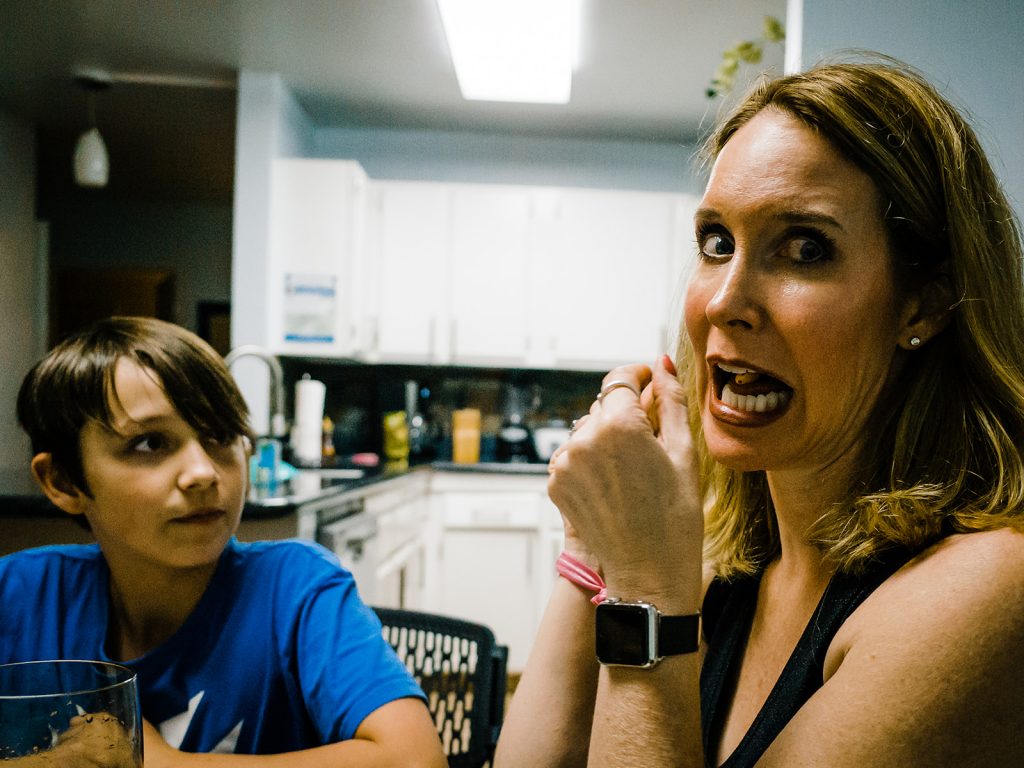
So, as we find ourselves in the thick of the holiday season, I hope you’ll join me in finding ways that you can create connection and uplift in your own and others lives through those embodied interactions—whether those be in the form of a quick chat with your coffee house barista, or conversationally dancing through questions and curiosities as you visit with friends and family. As you do so, don’t under-estimate the power of food and sharing personal space for making these interactions even more meaningful. Perhaps a potluck or game night is in your future (BeanBoozled is a great one to do with kids)? Or maybe a long overdue skype call with your cousin. If this feels daunting, remember that the most important ingredient for good conversation is curiosity – a childlike skill that only gets more valuable as we age.
The communication discipline is bleeding
NOTE: If you want more on the ongoing conversation that my comments are situated within, please explore our colleagues’ commentary on Twitter with hashtag #CommunicationSoWhite, read the backstory of these issues via Mohan Dutta’s astute commentary: https://culture-centered.blogspot.com/2019/06/in-post-made-in-response-to-changes-to.html and examine NCA’s record of documents about the distinguished scholar nomination processes and (lack of systematic) changes https://www.natcom.org/distinguished-scholars?fbclid=IwAR3pvlh-Wf78cbzcesDFSlI2rVi-yKopYlRdtAcMoYzpRK9X1GSUWMb9u0I
The communication discipline is bleeding. Pus oozing. Vomit erupting.
We are suffering.
Most humans turn away from suffering. We build walls on our freeways so we don’t see poverty on our daily commute. We build gates around our communities. We don’t look homeless people in the eye. We conveniently delete, scroll through, or click “sad” or “angry” emojis before quickly moving on.
And, right now, it would be easy, especially for the privileged among us, to turn away from the suffering of our discipline. It’s summer after all. Email auto-replies prove that we are “out of the office”. This is time for family, vacation, and writing!
But this suffering is not suddenly new. It’s been at a slow simmer. Will we ignore this boiling flashpoint?
Of course, only some of us, the privileged among us, have the luxury of ignoring. Or maybe we don’t ignore, but instead treat the situation as perfect summer entertainment. Heck, let’s just get out the popcorn and watch it all go down. Who will be the heroes? Who will be the villains? When will the usual players make their appearance? CRTNET hasn’t been this entertaining for years!
When suffering becomes a drama to be watched from the sidelines, the more vitriol, violence, conflict, and casualties the better. But our colleagues' suffering should not be entertainment.
What if, instead of ignoring or watching as spectacle, we chose to be courageous? What if I chose to be courageous? My coauthors’ and my very own research tells me that the courageous thing to do in the face of suffering is to show compassion.
Compassion comes in the form of recognizing and acknowledging suffering—deeply listening, hearing, and accepting the reality of truths and experiences of those who are suffering. It also means relating vulnerably, which requires us to be open to our own faults and uncertainties—admitting where we have been part of the problem, and choosing to engage in the conversation even if, by doing so, we might engage poorly and sometimes put our foot in our mouth. It means being o.k. when people point out that we did not say things quite right or that our well-intentioned compassion does not result in consequences that actually alleviate suffering. It means being o.k. with hearing that we may have actually made the suffering worse.
Indeed, relating vulnerably takes practice. And anything worth doing well is worth doing badly in the beginning. And after doing it badly, being compassionate (to ourselves and others) means caring less about “looking good” and caring more about (re)listening and courageously trying again.
Finally, and most importantly (and what differentiates compassion from empathy), compassion means acting or reacting in a way so as to materially relieve suffering. Certainly, this may be at the individual level (e.g., sending a supportive note). However, this also comes in the form of transforming structures that result in oppression.
As I have read the recent words from my colleagues of color—among others, Bernadette Calafell, Karma Chávez, Devika Chawla, Amira De La Garza, Mohan Dutta—I am again struck by the immense emotional labor and resilience required to shoulder, resist, and deal with ongoing and ever-present disciplinary structures that say, “You don’t belong here. Get out.” The people in power say, “but we have changed the rules of the game, you can now enter.” And then the powerful seem mystified saying, “Well, we changed the rules so you could enter, and unfortunately not enough people came.” Dragging oneself to the door, to just see it be shut (again), is more than exclusion. It’s trickery. Chicanery.
It’s one thing to be isolated, another thing to be tricked. The first is mean. The second is evil.
People are suffering because the structures of the communication discipline have resulted in evil consequences.
When doors are closed day after day and year after year, it’s not just suffering, but exhaustion and justified outrage. As such, it’s not enough to tweak the rules to the game. It may not even be enough to completely change the rules of the game (which it seems some folks are willing to do). Over time, we need to question the game itself.
Among other questions, we should be asking is this: “What does the institution of distinguished scholars produce at the structural level for the communication discipline?” When I use the word produce, I mean it in the way that Foucault talks about power “producing.” So, I am asking us to consider both intended and unintended consequences.
And, if we cannot come up with good answers, perhaps now is a moment in the discipline when we rise up and say, “new game.”
Certainty: The Fool's Drug of Choice

A couple weeks ago, I posted this on Facebook.
Certainty is a small warm cocoon that feels so good, until we realize how it cuts off learning, dialogue, relationship, and creativity. Courage is to break free of this small dark place, shine our soft underbelly to the world, and say, “I don’t know.”
Several friends suggested I write more. Since that time, I’ve written bits and pieces of what follows. None of it seems earth-shattering, but it fleshes out my original post.
* * * * *
Lately, I’ve spent a lot more time with children. I watched my niece and nephew, four and seven, for several days in June, and have been regularly hanging out with my new “Little Sister”, seven-year-old Arianna.
One thing I’ve noticed is their almost constant curiosity. Lydia noticed a tiny squirt bottle of water flavoring in my pantry, and asked, “Aunt Sarah, what’s this?” Zander, in my MiniCooper Clubman, “Aunt Sarah, how fast can you go?” Arianna, “Do you have a house? Does that mean you have a garage?” Their questions, in turn, unfolded into discussions that allowed them to learn something and helped me to appreciate and consider my world anew. Every once in a while, though, I noticed something else in their talk. It unfolded something like this:
Sarah says: “I like to eat a lot of vegetables. They give me vitamins to fuel my body.” The reply: “I know.”
On its face, this response of “I know” is pretty darn innocuous. It’s affirmation. It’s agreement. It’s definitely not counter-argument or trying to make me wrong. So what’s the problem? Why does the response, “I know,” irk?
I suspect there’s lots of reasons—some of them having to do with realizing that children don’t always interpret my unsolicited advice as helpful; others having to do with the fact that most people want to lay claim over some domain of knowledge. However, I think the effect of "I know" is more toxic than that—and that’s what my original Facebook post was about.
Namely, the need to be right, and be certain, and “know” can have a number of problematic consequences. It shuts down dialogue. It shuts down learning. It shuts down creativity and growth.
About right now, you might be saying to yourself, “I don’t reply to others by saying ‘I know,’” or “This is a child thing.” But, as people grow older, it seems we just become increasingly clever in our ways of saying, “I know.” We hide it behind sophisticated screens of logic, facts, research, and sarcasm. We hide it so well that we don't even see it--and this is a bad, bad thing, in several different ways.
First, a posture of “I know” is the enemy of learning. Children are amazing models for not placing significance on or being self-conscious about doing things less than perfectly. If a tiny ballerina cannot twirl yet, he or she makes a delightful mess of spinning until it’s learned. In contrast, when we adopt a posture of “I know,” then it’s a BIG DEAL and SOMETHING IS WRONG when we don’t know or do something perfectly.
Second, “I know” shuts down creativity and growth. “I know” functions as an a priori posture where a person must feel certain and successful before he or she can begin a project or engage in a certain conversation. I’m not knocking planning or education. I've spent more than half of my life in school. Strategies, itineraries, and expertise can serve as great resources for execution and confidence. However, too often we treat our expertise and knowledge not as resources to pull from when useful, but instead as rigid armor that we can never let down. As such, the knowledge and expertise becomes a screen through which the world is known, and becomes a burden that cuts us off from seeing the world and other people freshly, for what they are, TODAY.
When we hold onto our armor of certainty too tightly, we cannot be present for opportunities along the way. We gather all our evidence before we engage in dialogue. We need a perfect outline before we write. We create a strict itinerary before traveling. With these bastions of certainty clutched tightly in our sweaty grip, we see changes in our plan, or questions about our carefully crafted viewpoints, as obstacles to avoid or threats to annihilate. And, in the worst of cases, feeling like we need to know everything first paralyzes us in a stagnant pool of the familiar, mundane, and trivial. We miss out on the myriad adventures of plunging into the unknown.
Third, when we can embrace uncertainty, possibility opens up. The hiccups and outright challenges to our perfect plans / conversations / projects become contributions to the journey rather than reasons to be angry, or to make another wrong, or to chastise ourselves for not knowing better—something that Jon Camp beautifully discusses in relation to travel here.
Indeed, creativity and growth comes through process, flexibility and openness.
When I think about the people I admire, it’s those who consistently have the confidence and courage in themselves to adopt a posture of “I don’t know.” And even, “I don’t know what I don’t know.” Two examples come to mind.
First, for years, Belle Edson led several friends including me on a trip to Rocky Point, Mexico. Belle never knew exactly where we were going to stay when we got there. At first, this made me, a planner, very nervous. However, over time, I realized that her openness to uncertainty about our final destination was what made it possible to stay in the most beautiful locations for an affordable cost. We certainly could have reserved a place in advance, but it would have been much smaller and more expensive. Certainty comes with a price.

Second, a great example of living in a space of “I don’t know” is my mom, Malinda. She’s an educated 73 year-old that I’m confidant could have handily gotten through life based solely on the knowledge she’d accumulated by age 40. However, even as she has retired and moved to Arizona, she has continued to learn and grow. She reads “how to” and personal growth books (in addition to many others), takes swimming lessons, and is open to unfamiliar and alternative medical approaches. Because of this, she’s learned new ways of coping and flourishing as she serves as a primary caretaker for her husband, has become one of the fastest senior swimmers in the country, and has received and practiced physical therapy so she can remain physically fit. She is vibrant, alive, and always asking questions.
It’s a lot of fun to be around people who take a posture of “I don’t know.” In contrast, it’s not so delightful to be around people who are always in a space of truth and certainty. People who must always be right in conversation, by default, make other people wrong. From such a vantage, conversation is not a dance of ideas in which we might emerge on the other side as better informed or gaining new insight. Rather, it is a battle of “I’ll show her,” and “I’ll get him.” Even when we agree with such people, being around “I know” is exhausting, stale, and anxiety-producing.
This is backed up with the latest neurochemistry research available via the Harvard Business Review. According to this research, people create oxytocin (a feel-good hormone) in response to conversations that stimulate discussion and curiosity. In contrast, when people face those who are focused on convincing others, their bodies create cortisol (a hormone that shuts down the thinking center of our brains, activates conflict aversion and protection behaviors, and is linked to anxiety and weight gain).
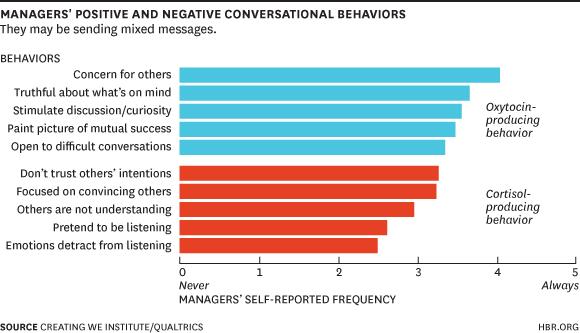
Of course, there’s good reason why we hold onto a stance of, “I know.” Like a drug, certainty is intoxicating. It feels good. But its high is hollow and short-lived. Certainty clings to past plans, expertise, opinions, beliefs, values and can cut us off from living life as lived—in all its glorious messiness and ambiguity—TODAY.
Adopting an “I don’t know” approach to life also takes courage and vulnerability. There are people in life (especially those heavily shielded with the armor of certainty) who pounce upon others’ vulnerability like drug addicts craving their next hit. I was target in such a situation recently when one of my Facebook friends asked, “Why would anyone support Obama in this latest terrorist situation?”
I answered something like, “I haven’t been following the story in the last several days as I’ve been watching my niece and nephew. I’ve heard bits and pieces from The Daily Show and NPR. Maybe I’ll read up and get back to you after I get back to my regular news routine.” In response, I was immediately met, with, "I have noticed most Obama voters get their information from places like Facebook and the Daily Show." Bam!
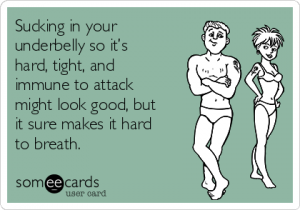
In this situation, my saying, “I don’t know” (and sharing my current knowledge sources) was invitation to get my belly squashed. It stung a bit, but I wasn’t terribly surprised given the history of what has showed up on this person’s Facebook feed. Despite the sting, having my belly squashed really isn’t that bad compared to living in a dark, small, and suffocating space called certainty. It seems better to live life with adventure, creativity, vulnerability, and growth—in a posture of “I don’t know”—even when it means some scars and bruises along the way.
Of course, I may be wrong.
A Bricoleur Bakes

This is a story about baking a first cheesecake. But, before that, another little tale:
Brad and I enjoyed a lovely breakfast this morning at BLD. Brad ate most of his “Hatch Hash,” but left virtually untouched a small pot of chorizo queso. Before the waiter could whisk it away, I got it safely packaged into a to-go cup. I have no idea of the chorizo’s ultimate destination, but in the next few days, it will add some spicy richness to some lucky dish--likely a soup or stew.
This is my normal way of cooking. I tinker. I use leftovers. I don't use recipes as designed—but instead refer to several in combination as brainstorming tools. I’m a big fan of peering into the fridge and pantry, then Googling the names of several ingredients (e.g., quinoa, spinach, pumpkin), seeing what comes up, and creating a unique concoction from there.
In other words, I’m a kitchen bricoleur.
Bricolage, French for “tinkering”, refers to the practice of creating work by pulling from a diverse range of materials that just happen to be available. My cooking is like my research. I rarely begin my projects with crystal clear purposes or instructions. Instead, I look around and see what’s available—adding a little of this, a little of that, tasting, and then modifying as I go. This works great for ~75% of what I cook and so-so for the other 20%. Every once in a while, it completely flops.
My method stands in stark contrast to that of my love, Brad, who starts with a recipe, purchases the proper ingredients, and follows the instructions. Brad, by the way, has a much higher yumminess success rate. But, it also costs more money and requires more up-front planning.
Anyway, this week, I wanted to make cheesecake.
And cheesecake is a chemistry project.
Bricolaging it in my traditional manner was not going to do for a cheesecake.
Therefore, and completely against my nature, I studied a recipe. Then I went shopping. Then I actually FOLLOWED the recipe. Okay, maybe not exactly, but mostly. And the result was, by all accounts, pretty dang successful.
Here, I provide a step-by-step of the process—as unlike most my cooking, this process can actually be replicated.
And, the process has also inspired some philosophical reflections (feel free to skip the next three paragraphs if you want to get right to the baking).
First, I think we could learn a lot about people’s research inclinations (deductive/scientific/positivist vs. inductive/humanistic/interpretive) by asking them how they usually go about cooking. And, we might be able to learn something about trying to cook in the opposite way than our nature. I’ll never give up my bricolage ways. However, this week, I definitely felt the advantages of baking with a recipe and set of instructions in hand. Doing it this way gives me a little insight into the advantages of a clear purpose, a priori research design, and being able to repeat the process!
Second, there are clear benefits of living with someone like Brad who has the opposite cooking style. Between the two of us, we have a great mix of good old reliably yummy dishes (from Brad), and decent dishes that creatively use up the leftovers (from me). Maybe we could usefully view the research field the same way, and rather than engaging in the same old tired paradigm wars, see how different styles complement (and need) each other.
Finally, it's no coincidence that it’s only on sabbatical that I baked a cake – where I have time and space to experiment, check and double check my work, and risk error without awful repercussions. It reminds me that giving myself space and grace for potential failure is a catalyst for feeling courageous enough to try new things.


Anyway, enough philosophizing, here’s the run-down on the cheesecake. I began with a low-sugar recipe available here. I made a couple modifications. First, I added a ginger snap crust available here. Further, I only added 2/3 of the Spenda called for. Also, I didn’t have a spring form pan, so used a “deep dish baker” from Pampered Chef that my step-mom Judi got my years ago. I also added a pan of water at the bottom of the oven (adds humidity so the cake doesn't crack). Finally I swapped cream cheese for lower fat Neufchâtel. Otherwise, I followed the instructions.

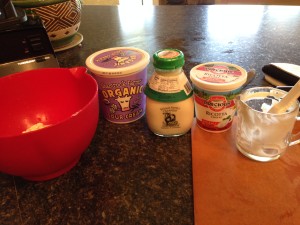

The next day, I topped the cake with raspberry jelly, first heated in a pan and then poured on top. I placed the cake into the freezer for a few minutes to firm it up.

Then, I whipped my own heavy cream, adding a couple tablespoons of Splenda and a teaspoon of Vanilla. I placed the whipped cream in a Ziploc baggy, took the cake out of the freezer and piped it onto the top. Then I topped half the cake with Truvia sweetened dark chocolate chips and the other half with raspberries.

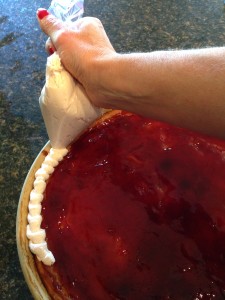

Since I couldn’t decorate the sides of the cake, I decorated the platter with flower cuttings.
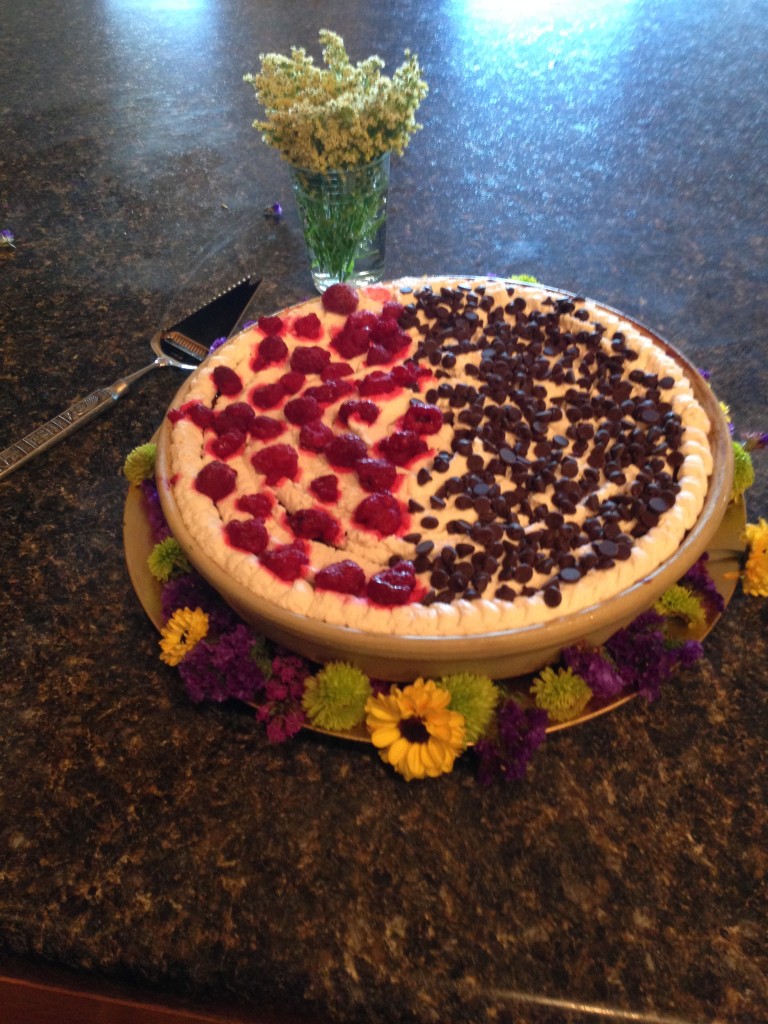
I hope this inspires you to try out the cake or another cooking style. Let me know how it goes, and feel free to post any questions.
Creating Flow at Work
What does your work feel like?
☐ A. It flies by. I a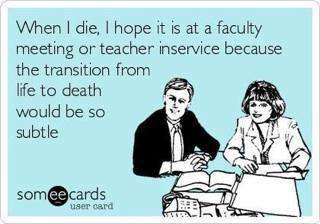 m totally engaged and occasionally even forget to eat or go to the bathroom.
m totally engaged and occasionally even forget to eat or go to the bathroom.
☐ B. I’m bored, watch the clock, and can’t believe this is actually my life.
☐ C. It’s overwhelming, difficult, and sometimes makes me feel like an incompetent idiot.
☐ D. It depends.
If you answered A, then y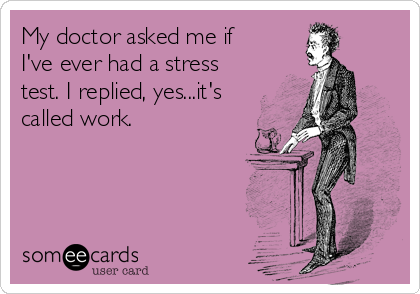 ou might just want to stop reading and get back to your super fulfilling work. If you answered B, C, or D, and want more flow in your work, stick with me.
ou might just want to stop reading and get back to your super fulfilling work. If you answered B, C, or D, and want more flow in your work, stick with me.
Flow, termed by psychologist Mihaly Csikszentmihalyi (pronounced chick-SENT-me-hi), is a state of intense absorption and involvement with the present moment. Flow activity is completely engaging and intrinsically rewarding. In other words, a person engaged in flow doesn’t view the activity as a hoop to jump through. Csikszentmihalyi first identified this “peculiarly positive and complex state of mind through interviews with people whose work or leisure life involved engaging and challenging tasks, such as performing surgery, creating art, climbing mountains, or playing chess” (Fave, 2013, p. 60). These people describe a feeling of absorption and enjoyment as they engage in activities that are high in challenge yet within their control.
On first encounter, it’s easy to think that flow is a bliss only available to the most creative and brilliant among us. However, lately I’ve been thinking how everyone can self-create flow through their current work tasks—no matter the ingredients at hand.
In thinking about this, I’ve mused about the raw materials of my own work as a teacher, researcher, and writer.
I would say that, about 25% of the time, I am pretty engaged in my work. Time literally flies when I’m giving conference presentations, teaching, and leading workshops. Creating lesson plans or designing power points also seems pretty easy and fun. During such periods I feel productive, energized, and in my element.
Fortunately, I rarely am bored or watch the clock. O.k., o.k., except maybe very rarely in one of "those" faculty meetings. And, of course, reference checking is a drag.
More frequently, my work can feel vague, complex, and anxiety producing. Especially when I am trying to write peer-review worthy scholarship, I can feel overwhelmed. This, in turn, sends me scrambling for any reason to take a break (YouTube cat videos, enter stage right). All this flitting back and forth makes me feel guilty, and this toxic mixture of guilt and anxiety does not equate with either a good mood or high productivity. Indeed, a task that “should” have taken 2 hours (and left me with several hours available for favorite leisure activities, like a good movie, yoga class, or coffee with a friend), instead takes all day long.
So, what might we do to proactively create work (or structure work for our team, colleagues, mentees, or students) that produces flow? Nine different characteristics make up flow, but here I focus on three ingredients that seem most important for concocting this magic cocktail of happiness and productivity.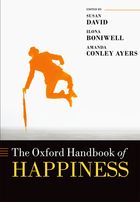
1. Clarify your goals – flow activity is characterized by clear, measurable, and feasible goals.
One of the reasons it’s easy for me to write lesson plans is because the task has feasible, clear, and immediate goals built into it: namely, I have to figure out activities and talking points, by a specific date, that will entertain and educate a specific level of students, about a specific topic, over a specific period of time.
In contrast, goals for academic writing are more amorphous—e.g., “improve this paper; be smarter; figure out why the findings are significant.” And, do this “at some point--probably sooner rather than later, if I ever want to graduate/find a job/get promoted."
Creating a series of goals, sub-goals, mini-goals, and immediate goals can help create flow for overwhelming and vague tasks. Doing so points to exactly what’s needed to do next. So, in the case of my huge writing tasks, to find flow, a key part is breaking it down to SMART goals (specific, measurable, attainable, relevant, time-bound); e.g., “edit methods section in the next 20 minutes,” or “reread these four articles today and take notes about what they say on future research needs tomorrow.” With clear goals in hand, focus appears.
When the goal is unclear, it’s impossible to find flow.
2. Seek out and create mechanisms that will provide consistent feedback – flow activity is marked by consistent and quick-turnaround feedback.
Imagine a mountain biker speeding down a dirt trail. The environment provides consistent immediate feedback regarding how well the cyclist is navigating the ride. Bumps, jars, and spills into the cacti help the rider consistently recommit and adjust. This immediate feedback is a key aspect of finding flow.
So, now, consider your own work and the kind of feedback you receive or imagine to receive. Flow is next to impossible without feedback. That’s why it may be easier for students to find flow in regular course assignments than when writing one huge paper that they won’t get feedback on until the end of the term. Writing a five page lesson plan (in which you can imagine students’ reactions and then immediately experience them the next day) is more engaging than writing five pages of a literature review that you don’t imagine a reviewer or advisor will read for another seven months.
So, if you don’t have consistent feedback, you are more likely to find flow if you develop mechanisms that spur feedback. Tactics might include sharing early ideas via social networking sites or a blog, creating a peer review system, or having an “accountability buddy” who will at least see, appreciate, and provide a pat on the back when a task is accomplished (or provide a tap on the shoulder when it’s not).
Imagined and actual feedback are key to finding flow.
3. Structure and create tasks that hit your sweet spot between skill and challenge.
As illustrated in the graphic wheel below, flow occurs at the pinnacle of challenge and skill. Think of skilled jazzed musicians completely engaged in their jamming session, or a pastry chef intently frosting a perfect cupcake. Now, consider your own talents, abilities, and tasks. What are those areas where you are highly skilled, completely engaged, in control of the situation, but not overwhelmed? Those are your flow activities.
Unfortunately, all too often, our work is characterized by less joyous and productive states. First year doctoral students spend too much time in worry and anxiety. Cubicle dwellers may find themselves rotting away from boredom and apathy.
The key to flow is to create and seek out tasks that are a closer balance of skills and challenge. Finding flow on a ski slope requires knowing the runs that are this perfect balance. Too easy? You’re bored and freezing, waiting for friends at the bottom of the bunny hill. Too hard? You get a face full of snow and a chest full of terror.
Of course, to find flow, one needs to cultivate a skill—this skill may be in music, writing, cooking, sports, writing, or quilting—really, anything. Indeed, flow is different than leisure activity in that flow is precipitated by effort and practice. Indeed, to become great at anything, experts suggest 10,000 hours or more of practice.
As we grow older, if we want to continue to create flow, then, we must continue to learn. It’s easy to get comfortable in the “relaxation” area of the above grid—where we have very high skill but low challenge (e.g., cooking up the same tried and true recipe; or continuously relying on the much practiced and perfected lecture rather than creating a new lesson plan). Sure, this doesn’t cause us anxiety. However, playing it safe doesn’t invigorate.
I’ve personally found that in order to eventually create flow in a high challenge activity, I usually must first must push myself into “anxiety” and “arousal.” I’ve done this enough that the memories of past flow (and the energy, joy, and productivity that come with it) are great motivators to get me out of my comfortable routine and try something new. That said, doing new things—like going to a new fitness class or traveling to a foreign country—can still be initially stressful, frustrating, or even embarrassing and scary.
So, in summary, three things to create flow include:
- Clarify the goal – and try to make it SMART (specific, measurable, attainable, relevant, time-bound).
- Seek out tasks that provide immediate imagined or actual feedback and/or create mechanisms to receive feedback.
- Structure and create activities so that they fall in the sweet spot of complex challenge met with adequate skill.
Do you have other ways of finding flow and engagement in your work? If so, or if you have any other feedback, I would love to hear from you. Also, if you found this post useful, feel free to share it with your own networks. Cheers, Sarah
See here, here, and here for more information on flow. Oh yeah, and here: Fave, A. D. (2013). Past, present, and future of flow. In S. A. David, I. Boniwell, & A. C. Ayers (Eds.), The Oxford Handbook of Happiness (pp. 60-72). Oxford, UI: Oxford University Press
The Single Most Important Lesson of the Latest School Shooting
For the last week, America has marveled at the behavior of Antoinette Tuff, credited as the unlikely hero who prevented the would-be school shooting in DeKalb County, Georgia.
As a quick summary, 20 year old Michael Brandon Hill entered McNair Learning Academy August 20th, packing nearly 500 bullets, weighed down by extra magazines, an AK47-type rifle, and a committed resignation that he would die that day. It was a Sandy Hook massacre in the making—a toxic mixture of a troubled young man, a long history of mental unbalance, and enough ammo to shoot more than half the student body.
But, someone turned that around. After Mike snuck through the security door behind a parent, he was met by front office employee Antoinette Tuff who, over the next couple hours, talked him down—or more precisely, talked him “up” and “through”—his shoot-out plans. Miraculously, no one—not the police, the children, the staff, nor the shooter himself—was physically harmed.
Much of Antoinette’s discussion with the shooter is recorded via a 911 call, a call that should be required listening for police officers, hostage negotiators, or anyone desiring an education in effective negotiation strategies (abbreviated and full version are available). Antoinette offers additional insight in her first interview after the ordeal.
“She did all the things we try to teach negotiators,” said Clint van Zandt, former FBI profiler and hostage negotiator, on NewsNation Thursday. “She was a great ‘go-between,’ she identified with the aggressor, she offered help, she minimized what he had done, she helped develop a surrender ritual, she told him what to expect, and told the police what to expect, she offered love, said she was proud of him, she offered him a positive future–every one of those things is something we spend weeks teaching negotiators, and this lady did it intuitively.”
Even more, right before his surrender, Antoinette took care to ensure the police would not harm the boy (even offering to shield him as he gave himself up), and helped him navigate a last drink from his water bottle.
Since the ordeal, analyses have examined religious lessons learned, how we can train a hero, and whether courage can be taught. These are all good issues, and in the future I may pursue a close discourse analysis of the call.
However, here, I want to focus on what I believe to be the single most important lesson we can learn from Antoinette.
It is this: the mere choice to communicate may be the most important component for practicing compassion.
When faced with an angry, irritated, un-medicated, and violent young man, Antoinette could have easily chosen anger, fear, violence, or distress. Rather than lashing out, isolating him, or fleeing herself, she instead invited Mike back into her office and began to talk and be with him. Through her verbal and nonverbal immediacy, she then recognized his pain, related to him empathetically, and reacted with respect and care.
On its face, this idea—the mere choice to be with another and communicate—is obvious. That is why perhaps it’s so easy to overlook it as a key part of compassion. Indeed, this component is missing in the latest theoretical models of compassion (e.g., Way & Tracy, 2012; Miller, 2007). However, as Antoinette’s case clearly illustrates, the mere choice to communicate is something we should pay more attention to as the crucial catalyst for empathy, civility, and care.
Timothy Huffman, ASU doctoral alum and new assistant professor at Loyola Marymount University, makes a powerful case for the importance of “compassionate presence” as a necessary and overlooked component of compassion in his 2013 dissertation. He asks (p. 82):
- How can someone notice the suffering of someone they cannot see?
- How can a person relate to someone they are not with?
- And finally, how does one act to address a need held by a person who is nowhere to be found?
Huffman argues based upon his research with homeless young adults that, “One cannot recognize, respond, or react without some form of presence. Presence, it seems, is a necessary condition for other functions of compassion to move forward” (p. 82).
And compassionate presence is what we see in the case of Antoinette.
Let’s consider a related topic of negotiation and how, for a long time, an obvious but key part was missing in terms of explaining how or why negotiation was successful. The topic of salary and purchase negotiation has a rich history, with much research explaining various factors—e.g., who makes the first offer, the ordering of concessions, the severity of stance, and so on—and their impact on negotiation success. However, in many situations, these factors don’t matter one wit.
So, what’s the difference that makes a difference? In many cases, it’s choosing to negotiate in the first place.
This simple but crucial factor is powerfully illustrated in Babock and Laschever’s Women Don’t Ask where they demonstrate, among other things, that men initiate negotiations about four times as often as women—and these initiations are crucial in terms of men’s increased lifetime earnings and professional success. The takeaway? Successful negotiation requires that the person recognize the situation as one to negotiate to begin with. If you don’t bother to ask for a raise or a better price, a truckload of negotiation skills aren’t going to matter.
It’s the same with compassion. Just initiating nonverbal immediacy and communication is a crucial compassion skill.
Of course, initiating compassionate presence (just like initiating negotiation) is easier said than done. Contextual, environmental, and biological cues can serve as stumbling blocks.
Recent neuroscience research shows that when people see images of people unlike them, their first instinct is not compassion. As reported by The Greater Good, “Within a moment of seeing the photograph of an apparently homeless man, for instance, people’s brains set off a sequence of reactions characteristic of disgust and avoidance…as if people had stumbled on a pile of trash.”
Despite these instant responses, human beings do have some control in the matter. Namely, if we take just enough time and care to be with the “other” person, our instant biases are moderated. For example, noted in the same Greater Good article, Ohio State researcher William Cunningham found that despite the fight or flight response in white people who see black faces for just 30 milliseconds (so short that it amounts to subconscious exposure), when they “had the chance to see black faces for a bit longer (525 milliseconds) and process them consciously…they showed increased activity in brain areas associated with inhibition and self-control. It was as if, in less than a second, their brains were reining in unwanted prejudices.”
Likewise, some of the latest brain scan research indicates that, “people stop dehumanizing homeless people and drug addicts when they’re made to guess what these people would like to eat, as if the study participants were running a soup kitchen.”
In other words, taking a moment to connect and focus on the other as a person can trigger compassion and empathy. Antoinette’s actions, along with this brain scan research, support the Contact Hypothesis, which states that under the right conditions, contact between members of different groups can reduce conflicts and prejudices.
So, we can take a lot away from Antoinette’s courage and empathy in that Georgia Elementary School front office. However, perhaps the most basic lesson is that great things can emerge when we take a moment to be verbally and nonverbally close to another.
Many people have called for ways the government should honor Antoinette as a national hero. But we can also honor her individually, another way.
Specifically, we can choose to spend a bit more time and communicative space with people who, on their face, may look and act quite differently than ourselves—people who we may otherwise be inclined to treat as dangerous, unfriendly, unworthy, or just odd.
In doing so, we might practice “compassionate presence,” a key component to compassion, empathy, courage, and, perhaps, even heroism.
Tips from a Reformed Flossing Slacker
Over the last year, I have listened and re-listened to the audio--book "The Power of Habit" by Charles Duhigg. This book has profoundly affected how I evaluate my daily activities, and specifically, how I might create habits that best serve me.
According to research, ~90% of our behavior is habitual. Why? Habits are easy. They don't require thinking. Habits are automatic
Given the huge percent of our life that's habitual, if we want to change or transform our life, we must, literally, transform our habits.
Sabbatical, and the change in routine that comes with it, is a perfect time to actively re create a few habits. There have been several habit changes I've been up to, but perhaps the one I'm most pleased with is...
create a few habits. There have been several habit changes I've been up to, but perhaps the one I'm most pleased with is...
FLOSSING.
During our "goals" unit in happiness class this summer, I reported with pride to my students that I had been flossing every day for the last three weeks. Rather than, "Wow, Dr. Tracy, that's really swell," I instead was met with simultaneous uptakes in breath, and cries of, "ewww...". One student exclaimed, "Only for the last three weeks? That's DISGUSTING!" I recouped. "It's not like I never floss, it's just, well, maybe, that I, well, 'ya know, I floss, like, if I know there's something caught in my teeth or something." They were decidedly unimpressed.
Despite my students' shock, the statistics suggest that I'm not alone as a floss slacker. According to one article, only 12% of American floss daily. If you're one of the grimy 88% rest of us, and you're interested in changing this habit, here's some tips about how I've made the switch.
1. I purposefully scared myself. During my last dental cleaning in April, I literally turned to my lovely hygienist and said, "I need you to put the fear of god into me about flossing." She looked a bit surprised, and then asked, "Seriously?" With my gums still smarting, she delightfully described what happens to non-flossers.
In addition to gum disease, effects of not flossing include gingivitis and CANCER. Yes, cancer, and specifically pancreatic cancer, is linked to the bacteria and inflammation that enters the body every day when you don't floss.
Not flossing also makes your gums recede. If want a flossing kick-start, do an image search on "gum disease." Just don't do it while you're eating.
And, finally, letting the food rot in between your teeth (40% of the teeth total surface), is just gross. My hygienist said, "Some people say they don't floss because when they do, it smells like rotting meat." Arg! So, not flossing is kind of like perpetually french-kissing a variety of mini carcasses.
2. I planned and strategized how to make it "easy." For me, this meant buying "satin" dental floss that would slide easily between my teeth, and setting out this floss in a prominent easy to see location. In sight - in mind.
3. I began the goal during a time when my routine was already disrupted. Habits are location and time based. So, a perfect time to stop a bad habit or begin a new one is when your routine is already out of whack. I began the flossing habit over my seven weeks out of the country this summer. My evenings there were inherently somewhat different, and my bathroom stuff in a little visible hanging bag, so switching just one more thing to my nighttime line-up wasn't exponentially more difficult.
4. I talked about my new habit. Specifically, I told Brad, my mom, my hygeinist, and my students. What's more, I encouraged them to ask me about how I was doing. Talking to others makes it real, and provides an automatic accountability loop.
5. I practiced the habit at the same time every day. I flossed right before bed. Habits are most easily formed when they are performed the same way in the same time every day. That way, they become automatic. No more decisions.
6. Skipping a day wasn't an option. I told myself that flossing had to happen every night, no matter how late, busy, or sleepy I was.
7. The habit was linked to a small reward. For me, that was rinsing with mouthwash. Mouthwash provides a tingly zing that I've come to love, and one that I now associate with flossing. Research shows that good habits are much better formed when coupled with a reward. And, bad habits are shaken when we can find a new reward to replace the reward of the old behavior. E.g., if 2 p.m. used to equate with a sweet treat, maybe now 2 p.m. is rewarded with a short stroll around the office or Facebook.
The impact of all this is that I've now been flossing every day since Thursday, May 2nd--well above the 66 days research shows it takes for a new habit to "stick." That said, flossing has not yet become completely automatic. I think, though, soon, it will be (and this blog post may indeed cement it...see tip # 4).
So, for all you fellow FLOSSING SLACKERS out there, I invite you to join me in the journey to never again go to sleep with mini carcasses in your mouth. And, if you have any related tips, stories, or challenges about flossing or any other habits, I'd love to hear from you.
Cheers, Sarah




